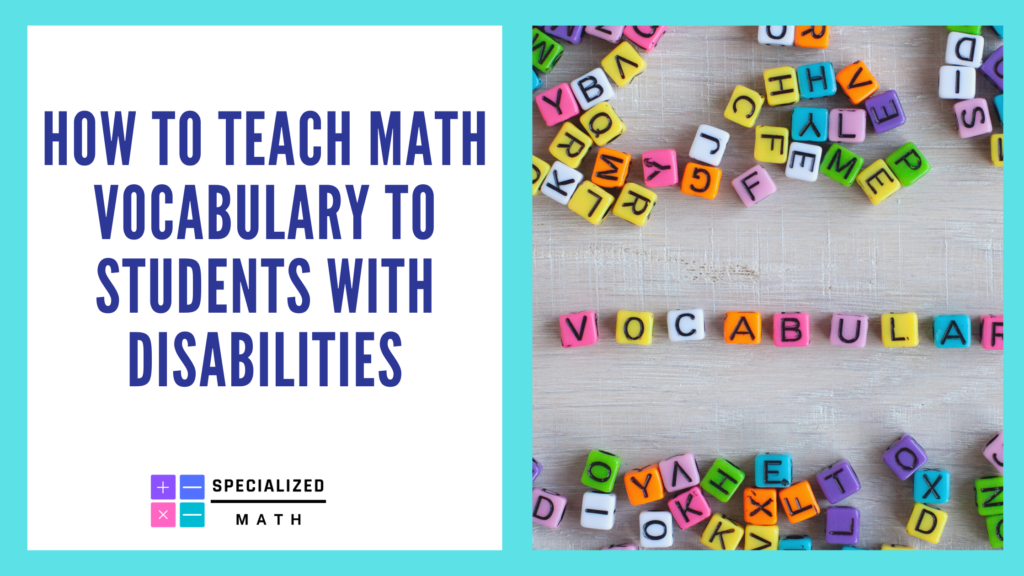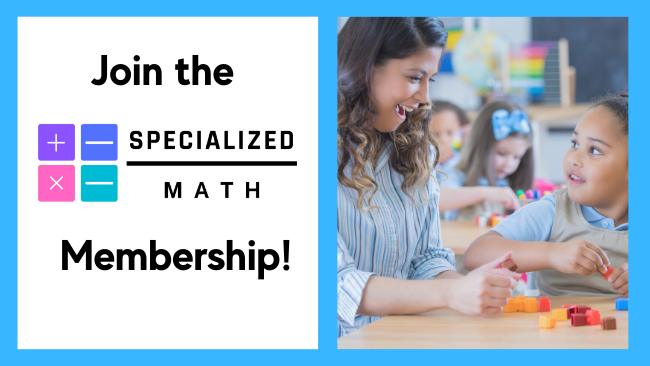Students with math disabilities or learning difficulties frequently find mathematics vocabulary to be a barrier to learning. When we look at how specific learning disability is defined by the Individuals with Disabilities Education Act, we know that our students may have “a disorder in one or more of the basic psychological processes involved in understanding or in using language, spoken or written, that may manifest itself in the imperfect ability to listen, think, speak, read, write, spell, or to do mathematical calculations.”
We understand that mathematics vocabulary is going to be a challenging area for many of our students. Because of this we should go into each unit or lesson prepared to address any confusing vocabulary terms, so that students are set up for success.
There are several barriers that we want to consider and address when teaching mathematics vocabulary to our students. We are going to discuss these barriers below:
Technical Terms
Mathematics includes technical terms, symbols, and diagrams that can be confusing for students with disabilities. It is important that we provide explicit instruction in math terms such as sum so that our students know exactly what the word means, when it is used and we do not use it.
Synonyms (Everyday English and Content Areas)
Many math terms are also synonyms for words that we use in every day English. Think volume and how it can describe both the amount of space as well as the noise level when listening to music. This can be confusing for students with language difficulties as well as English Language Learners (ELLs).
Multiple Meanings (Across Mathematics)
Some math terms may have different meaning depending on the associated concept. Consider quarter and how it can be a term to describe coinage, but can also be used to describe one half of a whole.
Homonyms
There are many mathematic term that sound the same but have different meanings. Consider the word sum and how it could be confused with the word some depending on the context.
Terms that Rely on Other Terms
Many math terms require you to have an understanding of other key vocabulary to understand the full term. Consider the term acute angle and how you need to have an understanding of angles prior to understanding this term.
Resources to Support Math Vocabulary Instruction
To get started with teaching math vocabulary to students with disabilities, check out these vocabulary word wall cards from the Virginia Department of Education. Granite School District also has word wall cards for each grade level. What I like about these cards is that they have pictorial support and examples which can give teachers a head start on teaching vocabulary. These cards can also serve as a reference for students who need the continued support as they learn math vocabulary.
Sign up now to receive free resources that will support you in teaching math to students with disabilities.
Click here to learn more about the Specialized Math Membership Site and gain access to even more resources to support you with teaching math to students with disabilities.


